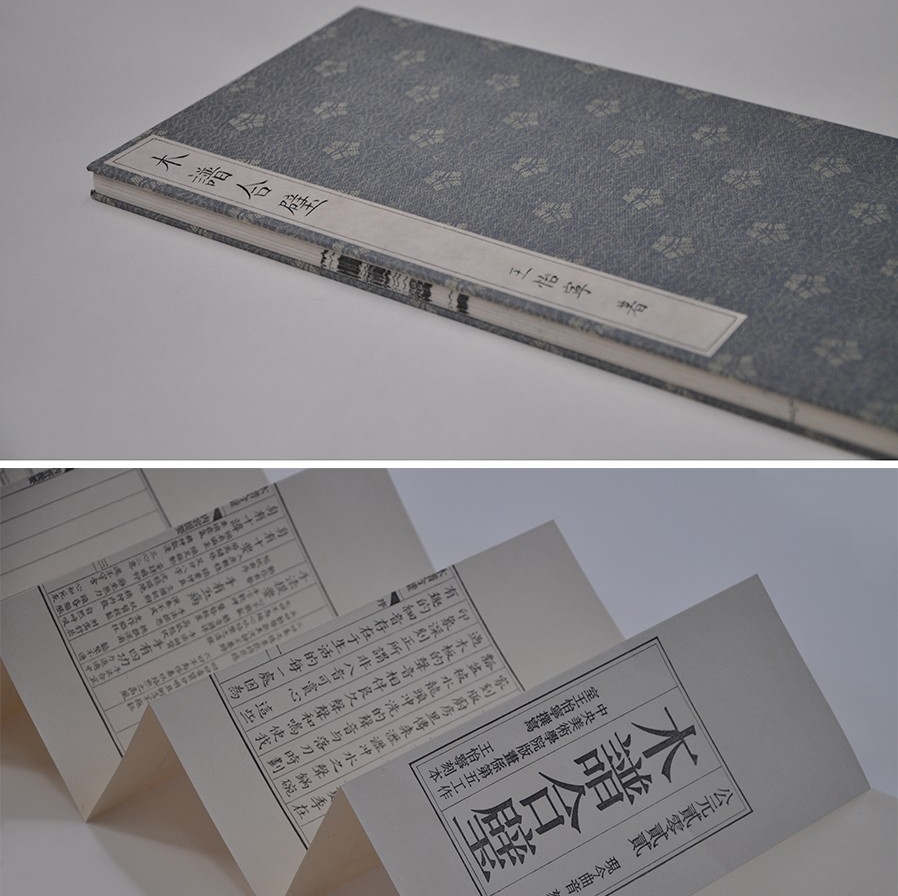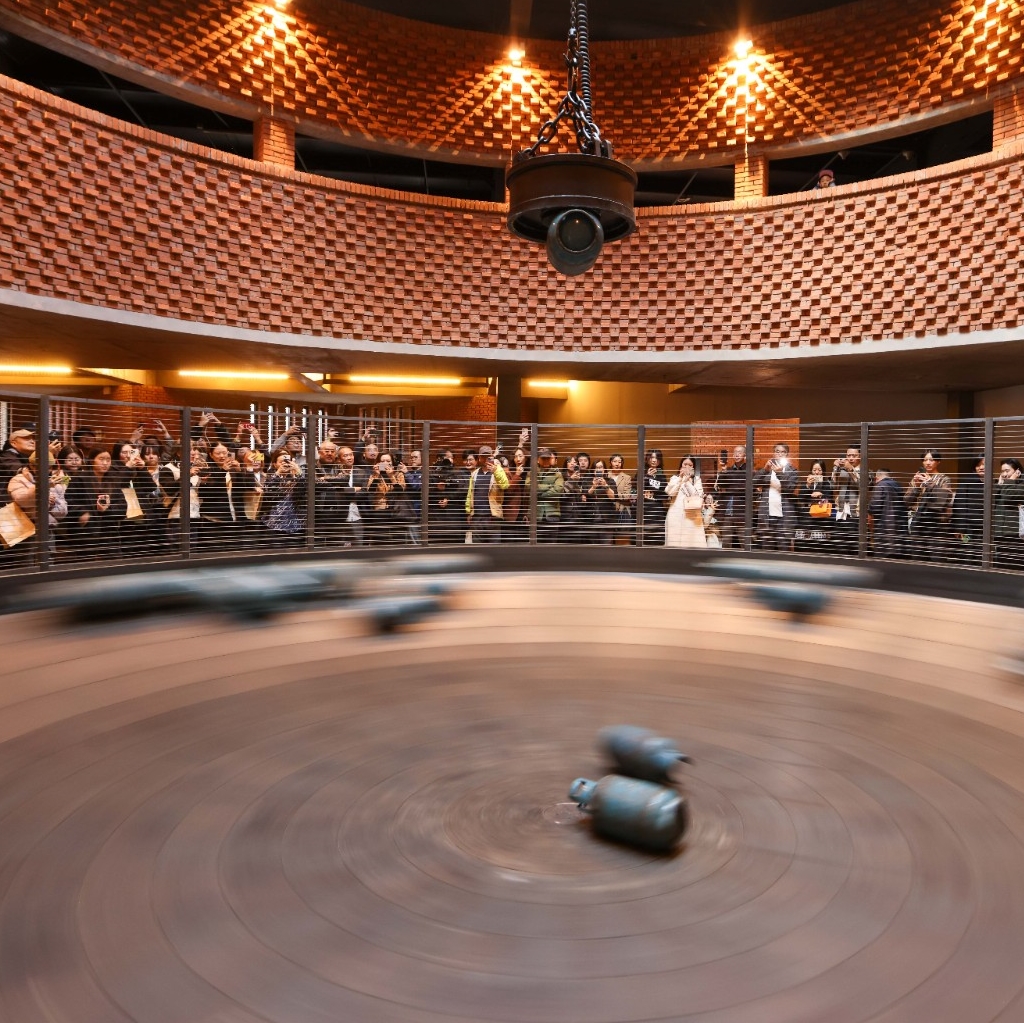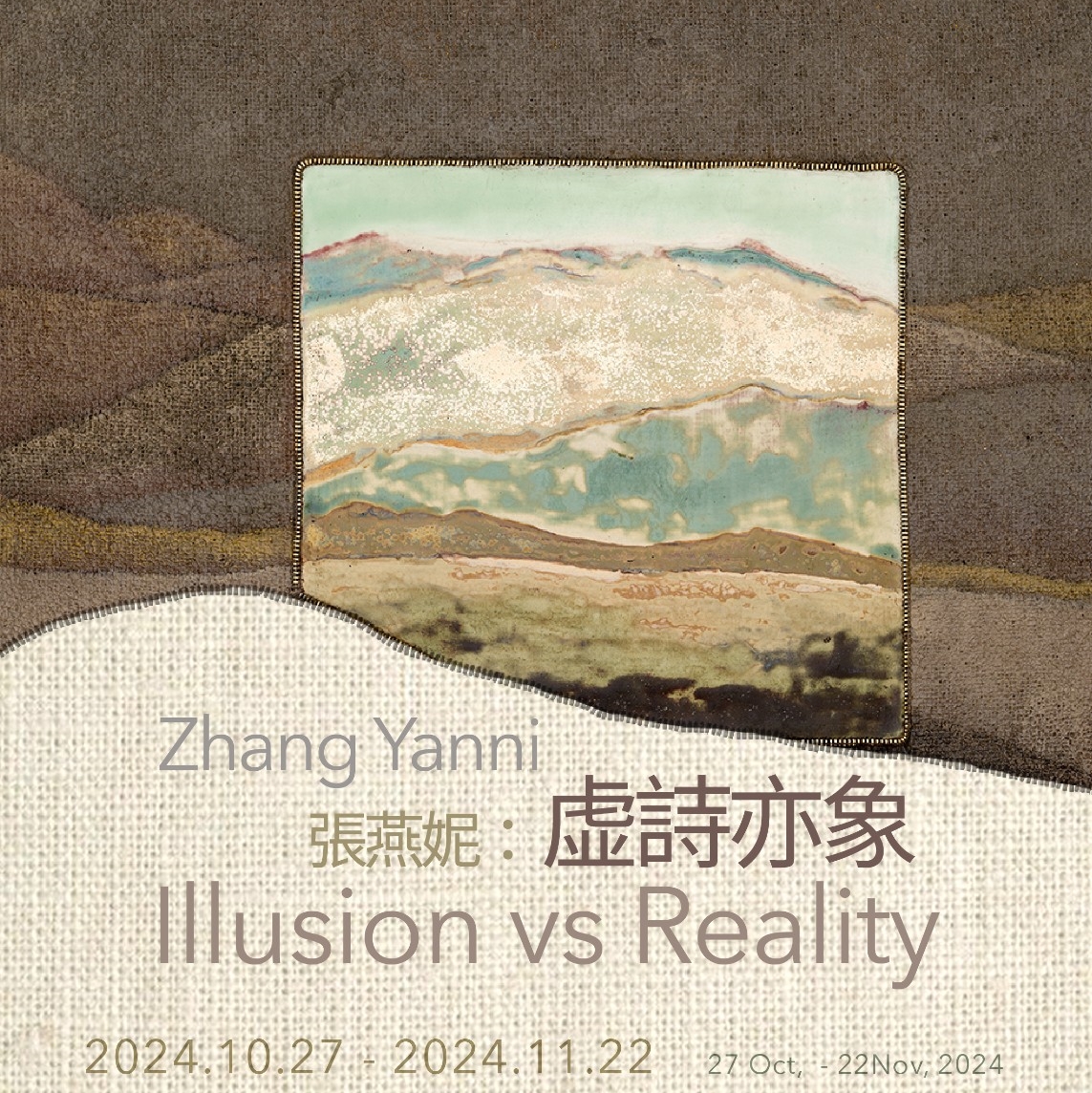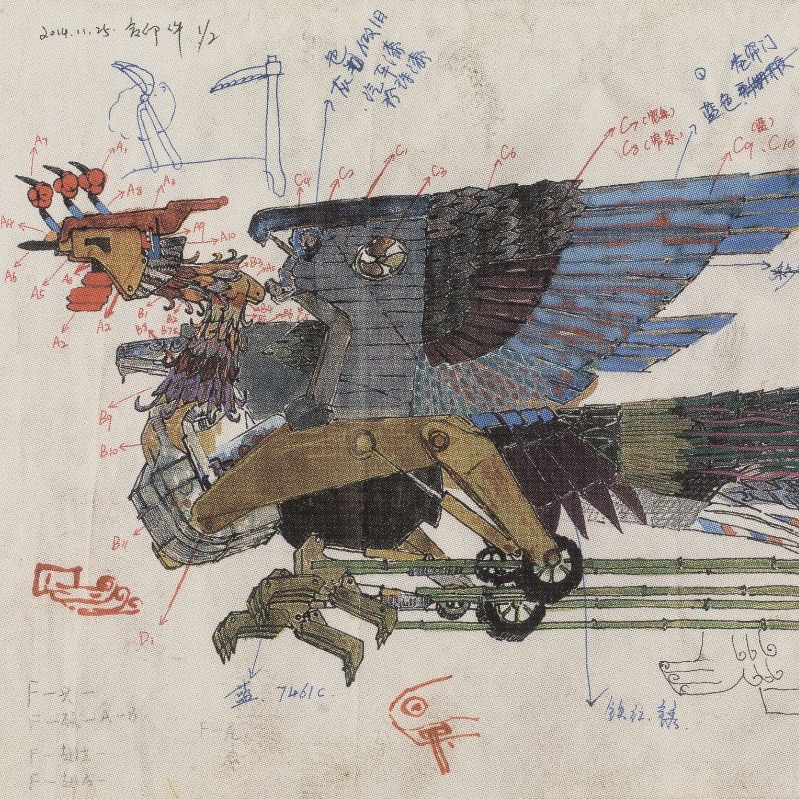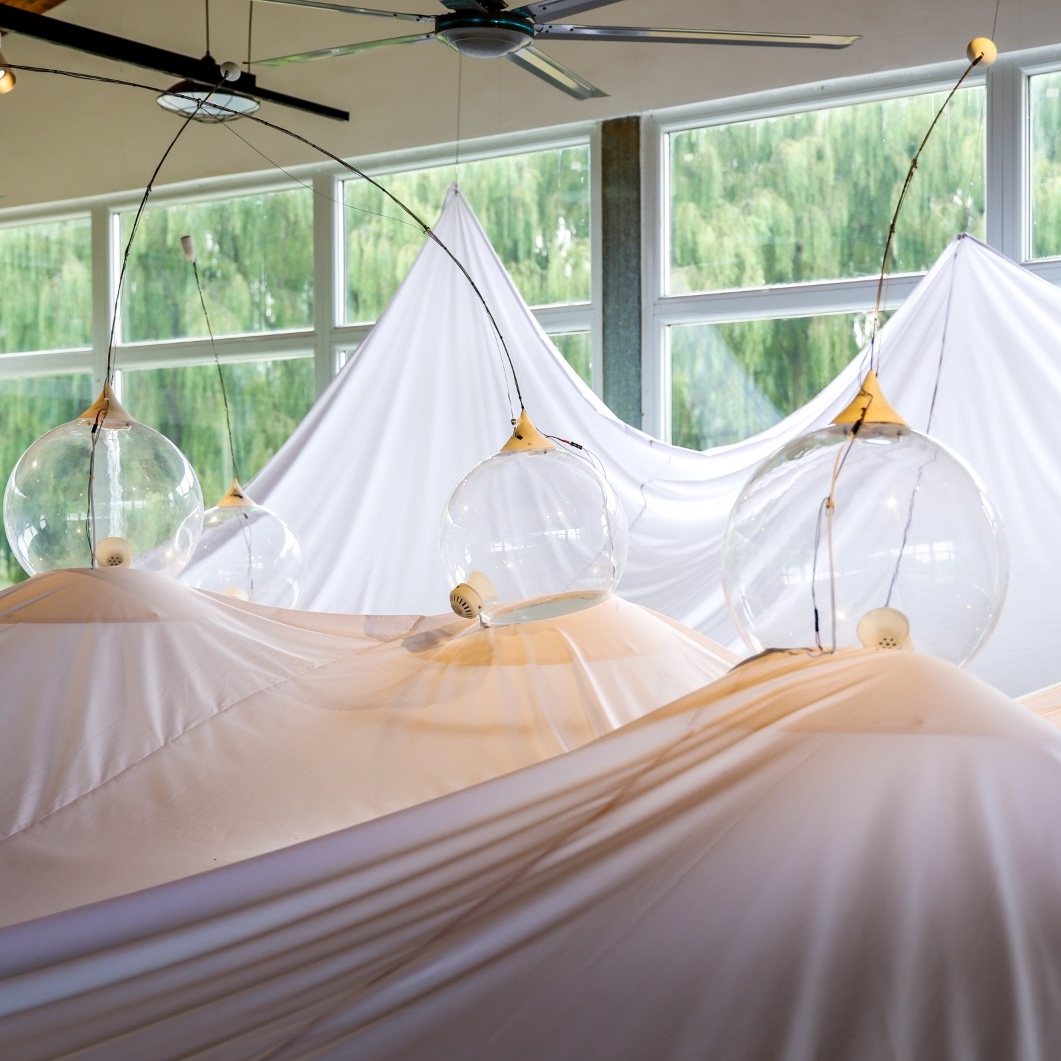
Exhibition View of "The Breezy Triplet"
At the beginning of spring, Shixiang Space launched its latest exhibition “The Breezy Triplet.” It presents the works by Chen Zhongkang, Lu Junzhou, and Yang Wentao, three calligraphers who have been friends for many years and have developed different aspects in calligraphy. They jointly staged a unique “contemporary liberal performance” for art lovers.

Exhibition View of "The Breezy Triplet"
The three calligraphers presented in “The Breezy Triplet” have been friends for more than thirty years, but they have completely different developing paths in calligraphy: Chen Zhongkang is a representative of the academic calligraphy and is regarded as a master of calligraphy with a far-reaching academic reputation; Yang Wentao is famous for his talent in the Jiangnan cultural circle, while Lu Junzhou’s work is difficult to be defined by the framework of calligraphy, and he is often regarded as a creator transcending the border between calligraphers and contemporary artists.

Chen Zhongkang
Chen Zhongkang, currently a doctoral tutor at the China National Academy of Arts and Academic President of the Calligraphy School of the China Academy of Art, is regarded by the calligraphy community as a leader in Tie Xue (it refers to studies of Tie-rubbing). Chen Zhongkang once stated, “I position myself as a firm and hard-working scholar that learns from the ancient” and he has “studied for more than thirty years while struggling all the way, but never left the ancient Tie-rubbing.” Benefiting from decades of dedicated and systematic unremitting efforts, Chen Zhongkang, has dived into the world of calligraphy in the process of being a disciple of the ancients, seeking innovation and reincarnation.


Exhibition View of "The Breezy Triplet"
The famous calligraphy theorist Qiu Zhenzhong evaluated Chen Zhongkang as “a typical case in contemporary calligraphy creation” and believed that his efforts in traditional calligraphy were not only very representative, but also had certain important characteristics. From the Wei, Jin, Tang and Song dynasties to the Ming and Qing dynasties, Chen Zhongkang adopted methods from all the masters of calligraphy, whether they were Wang Xizhi and Wang Xianzhi, Mi Fu, Dong Qichang, Zhao Mengfu or other modern masters, he deliberately experienced and systematically studied the entire tradition of Chinese calligraphy, and compared his practice with the ancients. In the practice of writing “dialogues” with ancient masters, he has opened up a creative path that cannot be easily copied by others.

Chen Zhongkang, Yang Wentao and Lu Junzhou in 1995
Lu Junzhou, recalled the beginning of their friendship as Chen Zhongkang and Lu Junzhou were both from Wenzhou and studied calligraphy with supervisor Zhang Suo. Yang Wentao and Chen Zhongkang met when they were studying in the China Academy of Art and they have known each other for more than thirty years. They have completely different concepts and pursuits of calligraphy, and they have always been outspoken in their daily interactions, which has not affected the mutual communication and close friendship among them.
Born in Suzhou, Yang Wentao majored in calligraphy and seal cutting in the Chinese Painting Department of Zhejiang Academy of Fine Arts in 1989. He and Chen Zhongkang were college classmates. “Wentao is a very interesting person. Although he only writes the calligraphy style of Yi Bingshou now, few know that Wentao has super imitation ability, and in my mind, he is also a master with the strongest writing ability. No matter whose name is mentioned, he can imitate the calligraphy styles of Kang Youwei, Qi Gong, Sha Menghai, Liang Qichao, Lu Yanshao etc. with just a brush. He can write all of them very authentically,” Lu Junzhou recalled.

Yang Wentao
For many art lovers, especially his two friends, Chen Zhongkang and Lu Junzhou, Yang Wentao is a talented literati from Jiangnan. It is enviable that he has owned the life of a contemporary Chinese literati in Suzhou. In addition to calligraphy and seal cutting, Yang Wentao has been engaged in exhibition work for a long time and has extremely wide hobbies. He has been estranged from the calligraphy world for a long time, but he maintains a closer relationship with the cultural scene.
In recent years, Yang Wentao’s calligraphy has basically focused on the style of Yi Bingshou. Both Yi Bingshou and calligraphy may just provide a way for him to enter the modern humanistic life, and they in turn bring the daily writing nature of calligraphy back to the desk paper. Lu Junzhou believes that the fact that Yang Wentao has only written the calligraphy style of Yi Bingshou for more than ten years may be related to his long-term participation in creating a large number of cultural projects. “For example, he has written for many cultural spaces at Gusu Bridge area, and he chose Yi Bingshou maybe because Yi’s style has the characteristics of unique design and sense of space, which makes it practical in modern life.”


Exhibition View of "The Breezy Triplet"
It is said that after the reconstruction of Suzhou gardens and historic sites, many of the restored writings on the plaques and couplets written by Dong Qichang and Wen Zhengming in the gardens were written by Yang Wentao. Actually, calligraphy is just one of the ways that Yang Wentao intervenes in cultural life. He is involved in writing articles, calligraphy, painting, seal cutting, pot carving, Pingtan, collection and appreciation, exhibition and event planning. He even has rich experience in cooking and got published on a food magazine.

Lu Junzhou
Lu Junzhou is now an independent artist. His hometown of Yongjia in Zhejiang is famous for its farming and reading culture. Wenzhou people also have a tradition of mastering a craft other than farming. Thus Lu Junzhou chose calligraphy. From primary school to junior high school, Lu Junzhou had amazing talent and soon became famous in the county. He was a well-known calligraphy prodigy.
But Lu Junzhou did not choose further development in academic studies, probably because of his nature. Chen Zhongkang once jokingly commented that Lu Junzhou was a traitor to the elegant and traditional calligraphy style of Wenzhou. However, Lu Junzhou felt that he was “not against tradition. On the contrary, I particularly love tradition. I usually spend my free time in reading and my appreciation habits also tend to be classical, but I believe that art is a completely individualized matter. Zhongkang, Wentao and I, as well as many people who write and paint, each has his own personality, understanding, thinking and expression. The so-called unity of knowledge and action means that one’s calligraphy is exactly like the the style of the calligrapher. Just like Zhongkang has a belief in ‘writing’ and believes that calligraphy is about writing words well. But for me, writing is art.”


Exhibition View of "The Breezy Triplet"
Lu Junzhou seems to convey the characteristics somewhere between writing and painting, with both abstraction and a sense of space. The appearance of calligraphy with a more contemporary artistic temperament does not stem from a pursuit to tradition or innovation, but from his long-standing ideal of art, “I didn't think about breaking through anything in the past, I just felt that maybe the entire history of calligraphy didn't have what I wanted. This is an innate idea, because now when I look back at my childhood works, which have already decided who I am now,” said Lu.
Three calligrapher friends, each has his own developing path to calligraphy. Chen learns from masters in the world of calligraphy and writes well; Lu regards calligraphy as his own artistic pursuit, valuing nature and free exploration; Yang works like a contemporary literati, gets closer to the daily writing nature of calligraphy in Suzhou with the unique cultural life of Jiangnan.
Friendship has become some implicit narrative of the exhibition, just like the allusion behind “The Breezy Triple,” “The Three Laughers at Tiger Creek”, which was a title jointly chosen by the three calligraphers. During the Jin Dynasty, monk Huiyuan lived in Donglin Temple and had a tradition of seeing off guests by the creek. One day, Tao Qian and Taoist priest Lu Xiujing came to visit. They were discussing Taoism in Mount Lu. Huiyuan saw them off from afar. When he heard the tiger’s call and realized that he had crossed the creek. They laughed and said goodbye, which was later called “The Three Laughers at Tiger Creek”. This symbolic Buddhist legend has been repeatedly interpreted by poets and painters of various dynasties over the long history, such as Li Bai’s “Smiling farewell to Lushan Mountain, Why bother crossing Tiger Creek”, Su Shi also painted “Painting Eulogizing Three Laughers”, and it gradually evolved from a story of literati into motifs of poetry and painting that symbolized the reconciliation of Confucianism, Buddhism and Taoism, and also pointed out a certain attitude towards art held by the exhibition. Just like an installation created for this exhibition, three paper cubes with different shapes were stacked using scrap paper written by three calligraphers, with a standard volume of one cubic meter. In this way, the exhibition hopes to provide a “stage” where the three calligraphers can invisibly reproduce the friendship legend of “The Three Laughers at Tiger Creek”. In the form of friendship society with calligraphy, the exhibition returns to art with a slight pull from discussions that are often limited to the text of their works, presenting human activities, emotions and thoughts of artists just like the traditional saying that “the style is the man.”
Text (CN) by Mengxi, edited (EN) by Sue/CAFA ART INFO
Image Courtesy of the Organizer.
About the Exhibition

Dates: February 11–March 31, 2024
Venue: Shixiang Space
Address: E2, Jili International Art Zone, Chaoyang District, Beijing


